Address
304 North Cardinal
St. Dorchester Center, MA 02124
Work Hours
Monday to Friday: 7AM - 7PM
Weekend: 10AM - 5PM
Address
304 North Cardinal
St. Dorchester Center, MA 02124
Work Hours
Monday to Friday: 7AM - 7PM
Weekend: 10AM - 5PM
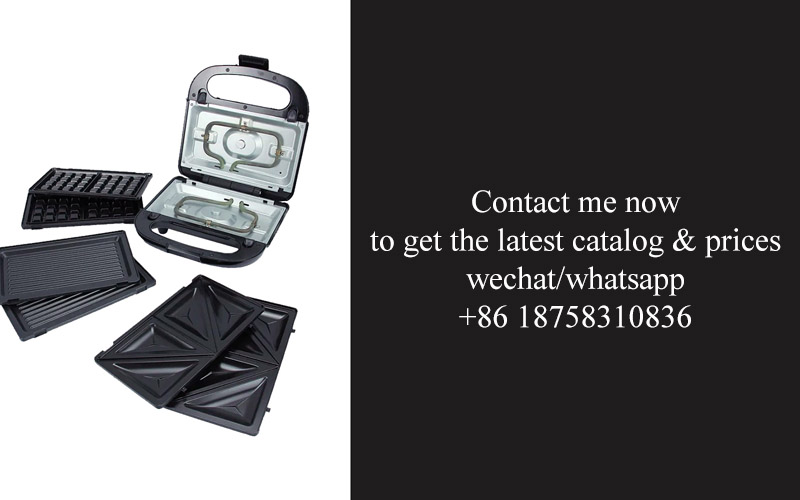
In the ever-evolving landscape of the kitchen appliances industry, suppliers must stay ahead of the curve to thrive. As market dynamics shift and consumer preferences change, understanding the pulse of the industry and harnessing data-driven insights becomes paramount. This article delves into the challenges and opportunities that lie ahead, offering a glimpse into the future and the strategies that suppliers can adopt to capitalize on the shifting tide of import substitution.
The kitchen appliance industry has been witnessing a significant shift, with a growing emphasis on import substitution. This trend, particularly pronounced in Europe and North America, reflects a strategic move by manufacturers to rely more on domestic production. Let’s delve into the reasons behind this rise and its implications for the industry.
Consumer preferences have been evolving, with a stronger inclination towards sustainability and local products. European and North American consumers are increasingly seeking out appliances that are not only high-quality but also made with environmentally friendly practices. This shift has led to a surge in demand for domestically produced kitchen appliances, as local brands can more easily cater to these values.
The global supply chain disruptions, particularly highlighted by the COVID-19 pandemic, have also accelerated the push for import substitution. The challenges in importing goods from other countries have made domestic production a more viable and secure option. Suppliers and manufacturers in the EU and North America are responding by investing in local manufacturing facilities and technology to ensure a steady supply of kitchen appliances.
Moreover, the cost factor plays a crucial role in the rise of import substitution. While imported appliances might have once been more affordable due to economies of scale, the rising costs of transportation and tariffs have eroded this advantage. Now, local production can often be more cost-effective, considering the reduced logistics expenses and the potential for lower import taxes.
Government policies have also been instrumental in fostering the growth of import substitution in kitchen appliances. Many countries in Europe and North America have implemented programs that encourage the use of domestic products. These initiatives often include financial incentives, such as grants and tax breaks, for companies that shift their production from overseas to local markets.
Innovation is another driver behind the rise of import substitution. Domestic manufacturers are now investing heavily in research and development to create cutting-edge kitchen appliances that are not only locally made but also feature the latest technology and design. This has not only helped in meeting consumer demands but has also given these brands a competitive edge in the market.
The rise of e-commerce has also contributed to the growth of domestic kitchen appliance brands. With more consumers shopping online, local suppliers can reach a wider audience without the need for international distribution channels. This has democratized access to high-quality appliances, making them more accessible to consumers across various demographics.
Despite the growing trend, the import substitution of kitchen appliances is not without its challenges. For one, local manufacturers may struggle with economies of scale compared to international competitors. Additionally, there is a need for continuous innovation to keep pace with global technological advancements and changing consumer preferences.
Another challenge is the need for skilled labor and advanced production capabilities. Investing in training and technology is crucial for domestic manufacturers to compete effectively. However, these investments can be costly and require a long-term commitment.
Yet, despite these challenges, the opportunities for growth in the import substitution market are substantial. As consumers become more conscious of their environmental footprint and the importance of supporting local businesses, the demand for domestically produced kitchen appliances is likely to increase.
In conclusion, the rise of import substitution in the kitchen appliance industry is a multifaceted trend driven by consumer preferences, supply chain challenges, cost considerations, government policies, innovation, and e-commerce. While there are hurdles to overcome, the potential for growth and the ability to meet evolving consumer needs make this a significant shift worth watching in the coming years.

The European Union (EU) and North America are two of the most influential markets for kitchen appliances, each with its unique dynamics that shape the industry’s landscape. Understanding these dynamics is crucial for suppliers looking to capitalize on market opportunities.
In the EU, the kitchen appliance market is characterized by high consumer standards and a preference for energy-efficient and environmentally friendly products. The EU’s strict regulations, such as the Energy Labeling Directive, have pushed manufacturers to innovate and offer appliances that are not only functional but also sustainable. This has led to a rise in demand for smart kitchen appliances that can be controlled remotely and provide detailed usage analytics.
North America, on the other hand, is known for its diverse consumer base and a market that is heavily influenced by technological advancements. The U.S. and Canada have seen a surge in the popularity of kitchen appliances that integrate smart technology, reflecting a broader trend towards home automation. Consumers in this region are also more likely to invest in premium appliances that offer superior performance and aesthetics.
The EU market is segmented into various categories, with dishwashers, ovens, and refrigerators being the most sought-after products. German and Italian brands have long dominated the market, known for their quality and durability. However, there’s a growing interest in appliances from other European countries, as well as from Asia, which are often more competitively priced.
In North America, the market is similarly diverse, with a strong focus on cooking appliances like ranges, cooktops, and microwaves. The U.S. has a significant share of the market, with a preference for large and powerful appliances. Canadian consumers, while similar in their tastes, often seek appliances that are more energy-efficient due to the country’s colder climate.
Both regions have seen a shift towards online sales, with e-commerce platforms becoming a significant channel for appliance purchases. This shift has been further accelerated by the COVID-19 pandemic, which has led to increased home renovations and the need for convenience. Suppliers must adapt to this digital transformation, ensuring their online presence is robust and user-friendly.
The consumer behavior in both the EU and North America is also shaped by cultural factors. In the EU, there’s a strong emphasis on health and wellness, which has led to a rise in demand for kitchen appliances that can aid in healthy cooking, such as air fryers and slow cookers. North American consumers, while health-conscious, are also driven by convenience and are willing to invest in appliances that save time and effort.
The competitive landscape in both markets is intense, with major players constantly vying for market share. Brand loyalty is high, and consumers often base their purchasing decisions on the reputation and reliability of the brand. This has created a market where innovation is key, as it allows manufacturers to differentiate their products and attract new customers.
In terms of distribution, the EU and North America have different channels and strategies. In the EU, traditional retailers and home improvement stores remain dominant, while in North America, there’s a blend of brick-and-mortar stores and online retailers. Suppliers must understand these distribution channels to effectively reach their target audience.
Moreover, the impact of trade policies cannot be overlooked. Both regions have seen fluctuations in import tariffs and trade agreements, which can significantly affect the cost of appliances and the availability of certain models. Suppliers must stay informed about these changes and be prepared to adjust their strategies accordingly.
Lastly, the rise of sustainability and the circular economy is reshaping the kitchen appliance market. Consumers are increasingly aware of the environmental impact of their purchases, and suppliers are responding by offering more sustainable options. This includes appliances made from recycled materials, extended warranties, and initiatives to recycle old appliances.
In conclusion, understanding the market dynamics in the EU and North America requires a nuanced approach that takes into account consumer preferences, technological advancements, cultural factors, distribution channels, and trade policies. By staying attuned to these elements, suppliers can position themselves to thrive in these dynamic markets.
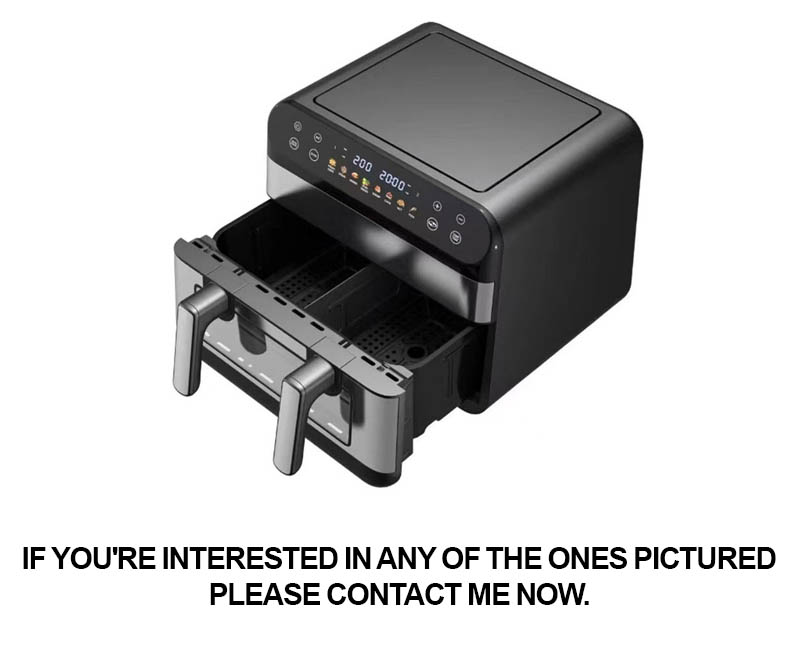
In the ever-evolving kitchen appliance industry, innovation is the cornerstone of staying ahead of the curve. Here are some fresh and innovative ideas that are set to reshape the market:
Smart Integration with Home Automation: Appliances that seamlessly integrate with smart home systems are becoming increasingly popular. Imagine a refrigerator that not only keeps your food fresh but also orders groceries when you’re running low, or an oven that adjusts its temperature based on your smartphone’s recipe app.
Eco-Friendly and Sustainable Design: As environmental concerns grow, there’s a significant opportunity for appliances that are not only energy-efficient but also made from sustainable materials. Think of a countertop blender made from recycled plastics or a range hood that filters and recycles cooking grease into biofuel.
Touchless and Sanitizing Technology: The rise of health consciousness has led to a demand for touchless appliances. A touchless faucet, oven door, or microwave could not only enhance hygiene but also offer a modern, sleek design aesthetic.
Customizable and Modular Appliances: Standard appliances are no longer cutting it for homeowners who seek personalized solutions. Modular appliances allow users to mix and match components to suit their kitchen layout and cooking needs, creating a truly bespoke kitchen experience.
Energy Harvesting and Self-Powered Appliances: Advances in energy harvesting technology mean appliances can generate their own power from ambient sources like heat or kinetic energy. A self-powered induction cooktop, for instance, could reduce energy consumption and lower utility bills.
Augmented Reality Cooking Guides: Imagine using your kitchen appliance as an interactive cooking guide. A smart oven could overlay AR instructions on your food, showing you how to perfectly cook a steak or the best way to dice vegetables.
Voice-Controlled Kitchen Gadgets: With the rise of voice assistants, integrating voice control into kitchen appliances makes cooking more intuitive and hands-free. A voice-activated blender or coffee maker could be a game-changer for busy households.
Health and Wellness Tracking: Kitchen appliances could be equipped with health monitoring features, such as a refrigerator that tracks your vitamin intake or a countertop oven that suggests meals based on your nutritional goals.
Interactive and Educational Appliances: For those who love to learn or teach cooking, appliances with interactive features could be a hit. An oven that offers cooking lessons or a microwave with a built-in recipe book could be both a tool and an educational device.
Customizable Aesthetics: Beyond functionality, the aesthetic appeal of appliances is crucial. Offering customizable color options, finishes, or even 3D printing services for custom designs could cater to the individual tastes of consumers.
These innovative ideas reflect a shift towards a more personalized, sustainable, and technologically advanced kitchen appliance market. As consumers demand more from their kitchen gadgets, these forward-thinking concepts are poised to become the new norm.
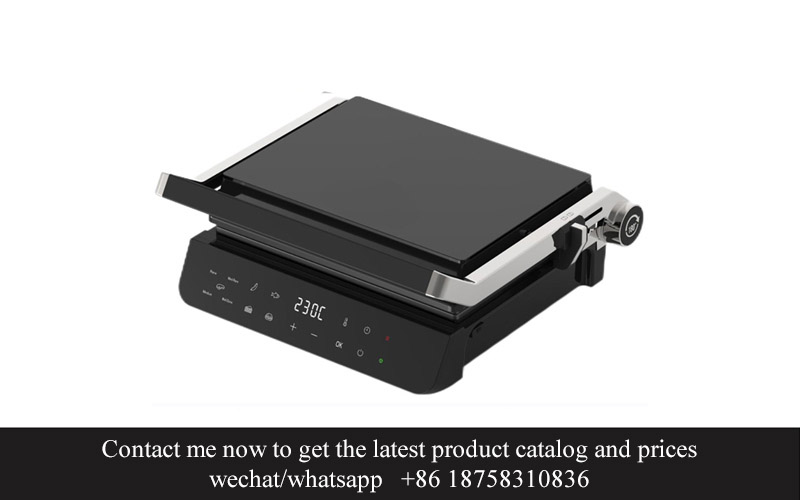
In the wake of global economic shifts and rising protectionist sentiments, import substitution programs have emerged as a strategic move for many countries. These initiatives aim to reduce dependence on foreign imports by fostering domestic production. For kitchen appliance suppliers, the impact of such programs can be both challenging and transformative.
The Shift Towards Domestic ProductionImport substitution programs often lead to a surge in demand for domestically produced goods. This shift can be a boon for local manufacturers of kitchen appliances, as they see an increase in orders to meet the growing domestic market needs. Suppliers must adapt quickly, ensuring they can scale up production without compromising on quality.
Increased Competition on the Home FrontWhile domestic demand surges, so does competition. Local manufacturers that were once sheltered from international competition now face a more level playing field. Suppliers must innovate to differentiate their products, offering unique features or superior customer service that appeal to consumers who are now more discerning due to the abundance of choices.
Government Incentives and RegulationsGovernments implementing import substitution programs often provide incentives to domestic suppliers, such as tax breaks, subsidies, or grants. However, these incentives come with a set of regulations that can dictate production processes, pricing, and even distribution channels. Suppliers must navigate these regulations to remain eligible for support while also ensuring compliance doesn’t stifle innovation.
Supply Chain DiversificationAs suppliers rely more on domestic sourcing, there’s a need to diversify the supply chain. This includes finding reliable suppliers of raw materials and components within the country, which may not always be as readily available or cost-effective as international options. Suppliers must invest in building strong relationships with local suppliers and possibly even develop new partnerships.
Quality Control and StandardsWith a focus on domestic production, suppliers must maintain stringent quality control measures. The reputation of domestic brands is at stake, and any compromise in quality could lead to a loss of consumer trust. Suppliers need to ensure that their products meet or exceed local and international standards, which may require additional certifications and inspections.
Export PotentialWhile the primary goal of import substitution is to reduce imports, some countries see it as a stepping stone to becoming a global exporter. Suppliers that successfully navigate the domestic market may have the opportunity to expand their reach internationally. This requires understanding international market dynamics and adapting products to meet foreign regulations and preferences.
Investment in Technology and R&DTo thrive under import substitution programs, suppliers must invest in technology and research and development. This not only helps in improving production efficiency but also in creating innovative products that can compete on a global scale. Suppliers that fail to innovate risk falling behind as competitors push the boundaries of what’s possible in kitchen appliances.
Consumer Behavior and PreferencesUnderstanding consumer behavior and preferences is crucial. As domestic consumers gain more power due to the import substitution trend, suppliers need to tailor their products to meet these evolving needs. This might involve incorporating smart technology, energy efficiency, and eco-friendly materials, all of which are increasingly important to today’s consumers.
Market Access and DistributionSuppliers must also consider market access and distribution channels. With a focus on domestic sales, suppliers need to establish a strong distribution network that reaches all corners of the country. This could involve setting up partnerships with local retailers, e-commerce platforms, or even direct-to-consumer sales strategies.
Long-Term Strategic PlanningFinally, the impact of import substitution programs on suppliers requires long-term strategic planning. Suppliers must anticipate changes in the market, prepare for potential shifts in government policies, and be ready to pivot their business models as needed. This includes having contingency plans for supply chain disruptions and the ability to quickly adapt to new market opportunities.

In the ever-evolving landscape of the kitchen appliances industry, staying ahead of the curve is crucial. Data-driven insights have become the compass for suppliers looking to navigate industry trends effectively. Here’s how these insights are shaping the future:
Digital Integration is KeyThe integration of smart technology into kitchen appliances is not just a trend; it’s a necessity. Suppliers who embrace digital integration are seeing increased demand for appliances that offer connectivity, remote control, and seamless integration with other smart home devices. Data analytics reveal a growing consumer preference for appliances that can be managed through mobile apps, providing convenience and efficiency.
Energy Efficiency Gains TractionEnergy conservation is at the forefront of consumer concerns, and data shows a significant shift towards energy-efficient appliances. Suppliers are responding by focusing on innovations that reduce energy consumption without compromising performance. From LED lighting in refrigerators to advanced insulation in ovens, the data-driven approach is leading to appliances that are both eco-friendly and cost-effective.
Health and Safety FeaturesConsumer awareness of health and safety has reached new heights, and this is reflected in the market trends. Appliances with built-in safety features, such as automatic shut-offs and child locks, are becoming standard. Data insights are highlighting the importance of transparent materials and easy-to-clean surfaces to prevent cross-contamination, making health-conscious consumers feel more secure in their kitchen choices.
Customization and PersonalizationPersonalization is no longer just a buzzword; it’s a reality. Data analytics are revealing a desire for customized kitchen appliances that cater to individual preferences and cooking styles. Suppliers are responding by offering modular designs and customizable features, allowing consumers to tailor their appliances to their specific needs.
Sustainability and Eco-Friendly MaterialsThe push for sustainability is stronger than ever, and suppliers are responding with eco-friendly materials and sustainable manufacturing processes. Data-driven insights are showing a preference for appliances made from recycled materials and those that have a lower carbon footprint. This shift is not only good for the environment but also for the brand reputation of suppliers who prioritize sustainability.
Urbanization and Compact LivingThe rise of urbanization and compact living spaces is reshaping the kitchen appliances market. Data indicates a growing demand for smaller, space-saving appliances that can fit into smaller kitchens. Suppliers are innovating with compact refrigerators, microwaves, and even countertop ovens that offer full functionality without taking up valuable counter space.
Health Monitoring and WellnessHealth and wellness are becoming integral parts of kitchen appliances. Data-driven insights are revealing a trend towards appliances that can monitor health, such as smart cookware that can track ingredients and nutritional content, or ovens that can adjust cooking times based on the user’s dietary needs. Suppliers are integrating health monitoring technology to create appliances that are not just tools but health partners.
Smart Home IntegrationThe connected home is no longer a futuristic concept; it’s a present reality. Suppliers are leveraging data to understand how kitchen appliances can be seamlessly integrated into the broader smart home ecosystem. This means creating appliances that can be controlled through voice assistants, learn user habits, and even predict maintenance needs.
Innovation in Cooking TechniquesCooking techniques are evolving, and suppliers are responding with innovative appliances that can mimic traditional cooking methods while offering modern conveniences. From sous-vide machines to induction cooktops that provide precise temperature control, data-driven insights are guiding the development of appliances that cater to both the traditionalist and the culinary adventurer.
The Role of E-commerceE-commerce has revolutionized the way consumers purchase kitchen appliances. Data analytics are crucial in understanding online shopping behaviors, which include factors like product reviews, pricing strategies, and the importance of clear, high-quality images. Suppliers who harness this data are better equipped to optimize their online presence and meet the demands of the digital consumer.
In conclusion, data-driven insights are pivotal in guiding suppliers through the complex industry trends of kitchen appliances. By understanding consumer preferences, embracing technological advancements, and focusing on sustainability, suppliers can not only keep up with the market but lead the charge in shaping the future of kitchen appliances.

In the realm of import substitution, several suppliers have emerged as shining examples of success. Let’s delve into the stories of a few that have navigated the complexities of this market strategy effectively.
A local manufacturer in Italy, known for its high-quality stovetops, shifted its focus from exporting to catering to the domestic market. By analyzing consumer preferences and local regulations, they developed a range of energy-efficient cooktops that met the needs of environmentally conscious consumers. This strategic move not only bolstered their market share but also helped in reducing the reliance on foreign imports.
Similarly, a small Canadian appliance company faced stiff competition from international brands. They turned this challenge into an opportunity by embracing the local culture and tailoring their products to the Canadian climate. By introducing frost-free refrigerators and ice makers that were specifically designed for the cold winters, they captured a niche market and became a go-to supplier for Canadian homes.
In Spain, a family-owned kitchen appliance supplier faced the challenge of import substitution by focusing on innovation and customization. They developed a line of smart kitchen gadgets that could be controlled via smartphone apps, catering to the tech-savvy Spanish consumers. This unique approach not only differentiated their products but also ensured a loyal customer base.
A Portuguese supplier, specializing in small kitchen appliances, recognized the importance of sustainability in the market. They invested in eco-friendly materials and energy-efficient designs, which resonated with the environmentally conscious consumers. By partnering with local suppliers for components, they minimized their carbon footprint and established a strong brand identity.
In the Netherlands, a supplier of high-end kitchenware faced the challenge of import substitution by focusing on quality and craftsmanship. They introduced a range of handcrafted cookware that was not only visually appealing but also had superior heat retention properties. This niche market approach helped them carve out a unique position in the competitive landscape.
A Belgian supplier, known for its innovative oven technology, faced the challenge of import substitution by investing in research and development. They developed a line of convection ovens that offered precise temperature control and reduced cooking times. This innovation not only appealed to professional chefs but also to home cooks looking for convenience.
In France, a supplier of kitchen ventilation systems recognized the importance of energy efficiency in the market. They developed a range of energy-saving hoods and fans that not only improved air quality but also reduced energy consumption. By educating consumers on the benefits of these products, they were able to successfully promote their brand and gain market share.
In the United Kingdom, a supplier of kitchen sinks and faucets faced the challenge of import substitution by focusing on durability and design. They introduced a line of sinks and faucets made from recycled materials, appealing to consumers who valued sustainability. This eco-friendly approach helped them build a strong brand and establish a loyal customer base.
In summary, these case studies highlight the diverse strategies employed by successful import substitution suppliers. From focusing on local culture and climate to embracing sustainability and innovation, these suppliers have managed to carve out a niche for themselves in a competitive market. Their stories serve as inspiration for other suppliers looking to navigate the challenges of import substitution and thrive in the global kitchen appliances industry.
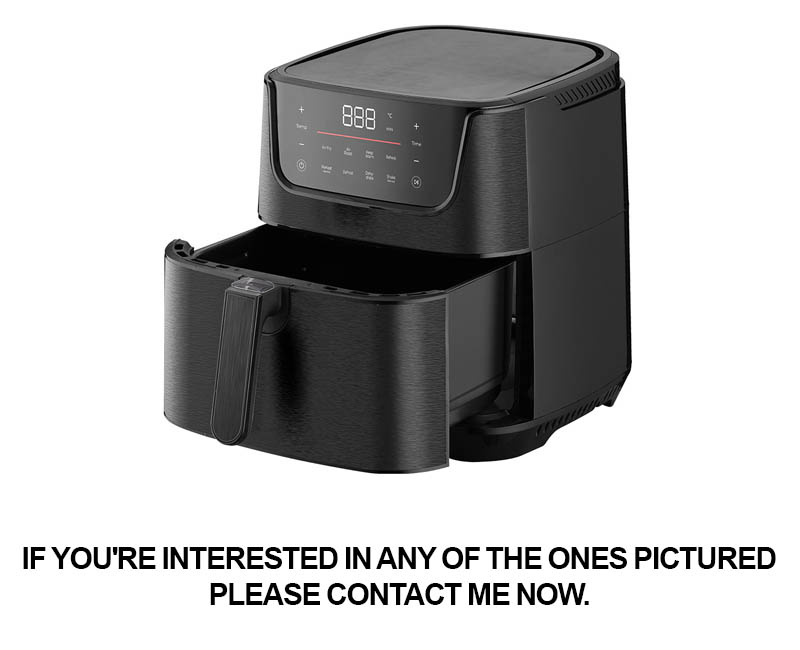
In the dynamic landscape of the kitchen appliances market, challenges and opportunities often go hand in hand. Understanding these intricacies is crucial for suppliers looking to thrive in an ever-evolving industry.
The rise of smart kitchen technology has introduced a host of new challenges. Consumers are no longer just looking for functional appliances; they’re seeking devices that can integrate with their lifestyles, offering convenience and connectivity. This shift demands suppliers to invest in research and development, pushing the boundaries of innovation.
Moreover, environmental concerns have taken center stage, with sustainability becoming a key selling point. Suppliers must now navigate the complexities of eco-friendly materials and energy-efficient designs, which can be both a challenge and an opportunity. While it requires additional investment and resource management, it also opens doors to a growing market segment that values sustainability.
Competition is fierce, with global players vying for market share. Local suppliers must find ways to differentiate themselves, whether through unique features, superior customer service, or competitive pricing. This competition can drive innovation, but it can also lead to price wars that squeeze profit margins.
The trend towards customization and personalization is reshaping the market. Customers are looking for appliances that fit their specific needs and preferences. Suppliers must adapt by offering a wide range of options, from different sizes and colors to specialized features. This adaptability is a challenge, as it often requires flexible production lines and a deep understanding of customer demands.
E-commerce has become a game-changer, allowing suppliers to reach a wider audience. However, this digital marketplace also comes with its own set of challenges, such as managing online reputation, handling returns, and ensuring secure transactions. The opportunity here lies in leveraging data analytics to improve marketing strategies and customer engagement.
Regulatory changes pose yet another challenge. New safety standards and certifications are regularly introduced, which suppliers must comply with. This can lead to increased costs and the need for ongoing training. However, it also provides an opportunity to align products with the latest industry standards, enhancing brand reputation and customer trust.
Supply chain disruptions have been a persistent challenge, particularly evident in recent years. Suppliers must be agile and resilient, with contingency plans in place to manage shortages and delays. The opportunity here is to foster strong relationships with suppliers and develop diversified supply chains to mitigate risks.
Sustainability, as mentioned earlier, is a double-edged sword. While it requires significant investment in green technologies, it also presents a chance to tap into a growing market that values environmental responsibility. Suppliers that can demonstrate their commitment to sustainability often find themselves with a loyal customer base.
Finally, the integration of kitchen appliances with other smart home devices continues to gain traction. This trend requires suppliers to consider interoperability and compatibility, ensuring that their products work seamlessly with other smart home systems. The challenge is to create a cohesive ecosystem that adds value to the consumer’s home experience, while the opportunity lies in becoming a key player in the broader smart home market.
In summary, the kitchen appliances market is filled with challenges that demand creative solutions. From technological advancements and environmental concerns to market competition and regulatory changes, suppliers must be adept at identifying and capitalizing on opportunities that arise from these challenges. By staying agile, innovative, and customer-focused, they can navigate this complex landscape and emerge as successful players in the industry.

In the evolving landscape of the kitchen appliances market, suppliers are increasingly seeking ways to capitalize on import substitution. This shift, driven by various factors such as economic policies, consumer preferences, and technological advancements, presents both challenges and opportunities. Here are some strategies suppliers can adopt to thrive in this dynamic environment.
Understanding Local NeedsSuppliers must delve deep into the local market to understand the specific needs and preferences of consumers. This involves analyzing regional cooking habits, energy efficiency requirements, and even cultural preferences that might influence appliance design and functionality.
Collaboration with Local ManufacturersForming strategic partnerships with local manufacturers can be a game-changer. By collaborating, suppliers can leverage local expertise and production capabilities, ensuring that their products are tailored to the market’s demands and can be produced more efficiently.
Investing in R&DTo stand out in the competitive kitchen appliances market, suppliers need to invest in research and development. This not only helps in creating innovative products but also ensures that they can adapt to changing trends and consumer expectations.
Focus on Quality and ReliabilityAs import substitution gains traction, consumers are likely to place a higher value on quality and reliability. Suppliers must ensure that their products meet or exceed these standards to gain trust and loyalty in the local market.
Adapting to Regulatory ChangesImport substitution programs often come with new regulations and standards. Suppliers need to stay abreast of these changes and adapt their products accordingly to avoid any legal or operational hurdles.
Leveraging Digital PlatformsDigital marketing and e-commerce have become crucial in reaching consumers. Suppliers should leverage these platforms to showcase their products, provide detailed information, and even offer after-sales services, thus enhancing customer engagement.
Building Strong Distribution NetworksA robust distribution network is essential for ensuring that products are readily available to consumers. Suppliers should focus on establishing partnerships with local retailers and online marketplaces to increase their product’s visibility and accessibility.
Customization and PersonalizationConsumers today are looking for appliances that not only perform well but also reflect their personal style. Suppliers can capitalize on this trend by offering customizable and personalized kitchen appliances that cater to individual preferences.
Sustainability and Energy EfficiencyWith growing environmental concerns, sustainability and energy efficiency are becoming key selling points. Suppliers should emphasize these aspects in their product offerings, showcasing how their appliances contribute to a greener lifestyle.
Investing in Training and SupportTo ensure customer satisfaction and repeat business, suppliers should invest in comprehensive training programs for their sales and service teams. This ensures that customers receive the best possible support and guidance.
Embracing Smart TechnologyThe integration of smart technology in kitchen appliances is on the rise. Suppliers should explore how they can incorporate smart features into their products, allowing for greater convenience and connectivity with other smart home devices.
Monitoring Market TrendsRegularly monitoring market trends is crucial for suppliers to stay ahead of the curve. This involves analyzing consumer behavior, competitor strategies, and emerging technologies to anticipate future demands and adjust their offerings accordingly.
Collaborating with Local DesignersLocal designers can offer unique insights into the aesthetic preferences of the market. Collaborating with them can lead to the creation of appliances that not only perform well but also resonate with local consumers’ tastes and styles.
Fostering Customer LoyaltyBuilding a loyal customer base is vital for long-term success. Suppliers can achieve this by offering exceptional customer service, loyalty programs, and ongoing support, ensuring that customers feel valued and are inclined to repurchase or recommend their products.
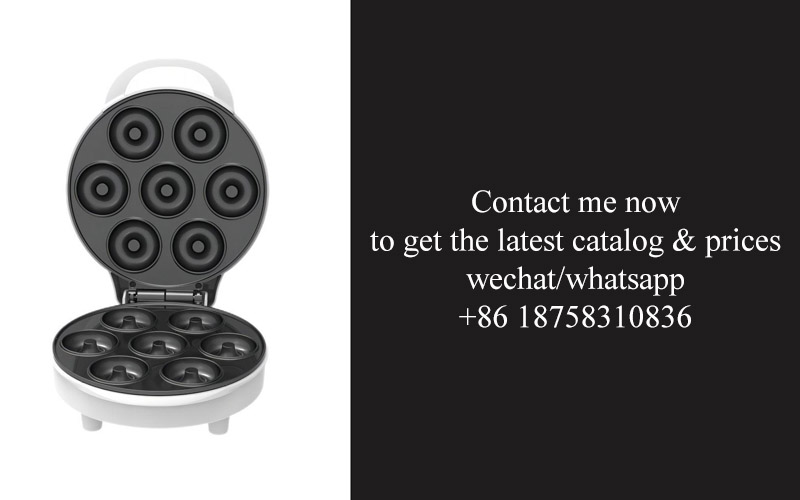
In the ever-evolving landscape of kitchen appliances, suppliers must stay ahead of the curve to anticipate what’s next. The future holds a mix of technological advancements, shifting consumer preferences, and regulatory changes that will shape the industry. Here’s a glimpse into the potential future outlook for kitchen appliances suppliers:
Consumer Demand for Smart and Sustainable ProductsSmart appliances are becoming increasingly popular as consumers seek convenience and efficiency. Suppliers must focus on integrating advanced technology, such as AI and IoT, to create appliances that can learn and adapt to user habits. Simultaneously, there’s a growing emphasis on sustainability. Appliances that are energy-efficient, made with recyclable materials, and designed for longevity will likely see higher demand.
The Role of E-commerce and Direct-to-Consumer SalesThe rise of e-commerce has democratized access to appliances, allowing suppliers to reach customers directly. This shift could reduce reliance on traditional retail channels and open up new opportunities for suppliers to engage with consumers. Direct-to-consumer sales models can also provide valuable feedback, enabling suppliers to tailor their products to market needs more effectively.
Globalization and Supply Chain ResilienceWhile domestic markets are crucial, the global nature of the kitchen appliances industry means suppliers must consider international expansion. This requires building resilient supply chains that can adapt to trade policies, currency fluctuations, and political instability. Suppliers may need to diversify their sourcing regions to mitigate risks and ensure a steady supply of components.
Customization and PersonalizationPersonalization is key in the kitchen appliances market. Customers are looking for products that cater to their specific needs and tastes. Suppliers should invest in customization options, such as modular designs or customizable interfaces, to offer a more tailored experience. This could involve partnering with technology companies to integrate features like voice control, recipe suggestions, and energy usage tracking.
Regulatory Compliance and Safety StandardsAs environmental concerns grow, so do the regulations governing appliance production. Suppliers must stay informed about new safety standards and sustainability requirements. This means investing in research and development to ensure compliance while also exploring eco-friendly materials and manufacturing processes.
The Integration of Health and Wellness FeaturesThe kitchen is no longer just a place for cooking; it’s a hub for health and wellness. Appliances that can contribute to a healthier lifestyle, such as air purifiers, water filtration systems, and smart fridges with health tracking capabilities, are likely to gain traction. Suppliers should focus on innovation in these areas to meet the evolving health-conscious consumer.
Collaboration with Designers and ChefsDesign trends and culinary preferences can significantly influence appliance sales. Suppliers should collaborate with designers and chefs to create appliances that not only look stylish but also enhance cooking experiences. This could involve co-developing appliances with unique features that cater to professional chefs or offering appliances with design elements inspired by current kitchen aesthetics.
Adoption of Advanced Manufacturing TechniquesThe future of kitchen appliances lies in advanced manufacturing techniques. Suppliers should explore 3D printing, robotics, and automation to improve efficiency and reduce costs. These technologies can also facilitate the production of complex and customized appliances.
The Importance of Data AnalyticsData analytics will play a pivotal role in the future of kitchen appliances. Suppliers can use data to understand consumer behavior, optimize production processes, and improve product performance. By analyzing trends and customer feedback, suppliers can make informed decisions that drive innovation and growth.
The Emergence of New Market SegmentsEmerging markets, particularly in Asia and Africa, present new opportunities for growth. Suppliers should consider the specific needs and preferences of these regions, which may differ significantly from those in developed countries. Tailoring products to these markets can open up significant revenue streams.
The Need for Continuous InnovationThe kitchen appliances market is highly competitive, with constant innovation being the key to staying ahead. Suppliers must foster a culture of innovation, encouraging their teams to explore new ideas and technologies. By investing in R&D and staying abreast of emerging trends, suppliers can ensure they remain competitive in the long term.
In conclusion, the future of kitchen appliances suppliers is shaped by a combination of technological advancements, consumer demands, and global market dynamics. By focusing on smart and sustainable products, embracing e-commerce, building resilient supply chains, and investing in innovation, suppliers can navigate the future landscape with confidence and success.